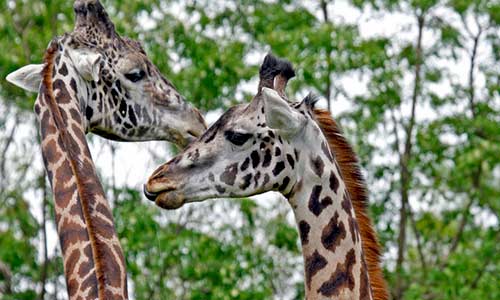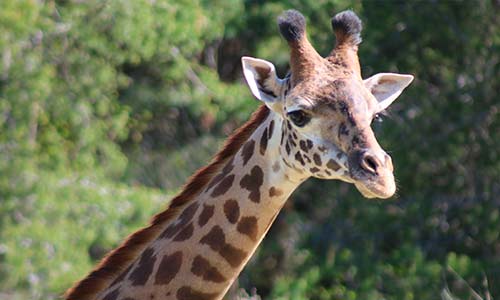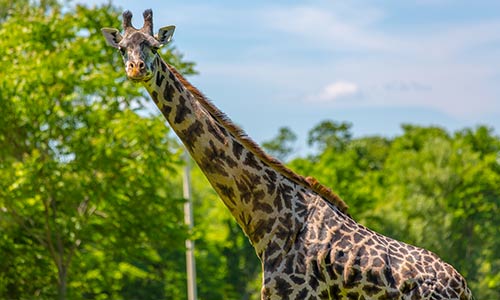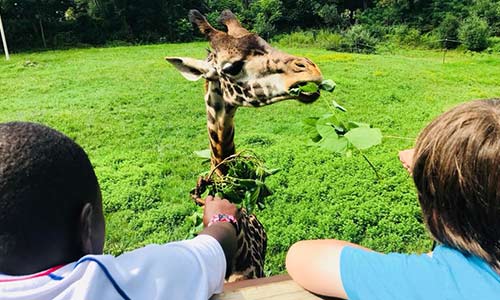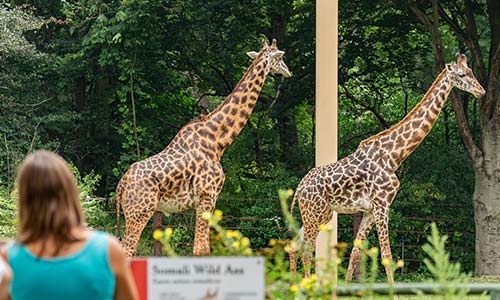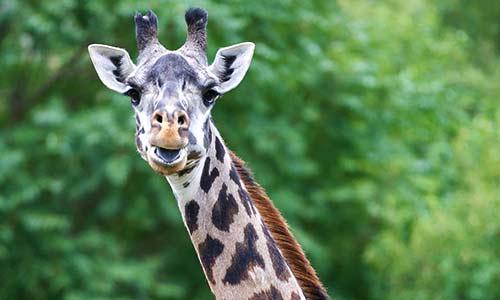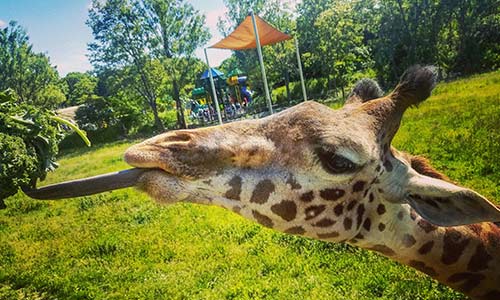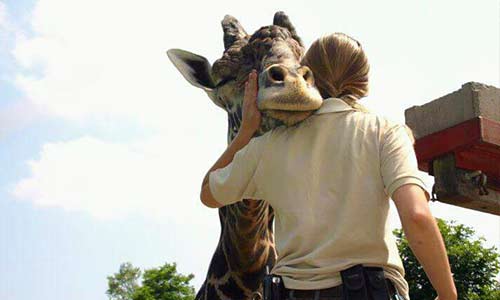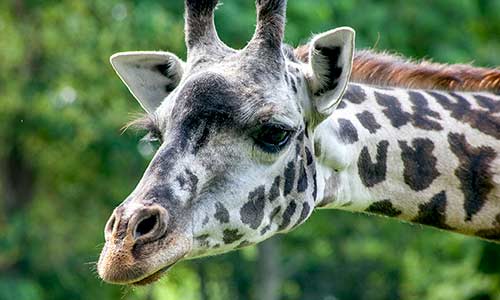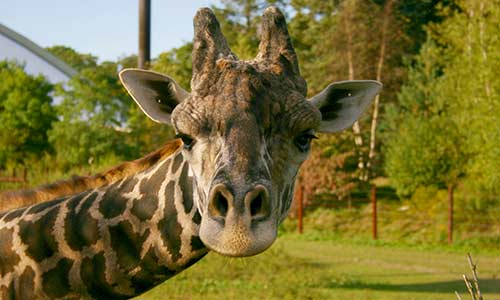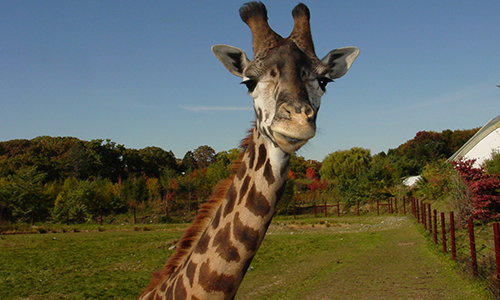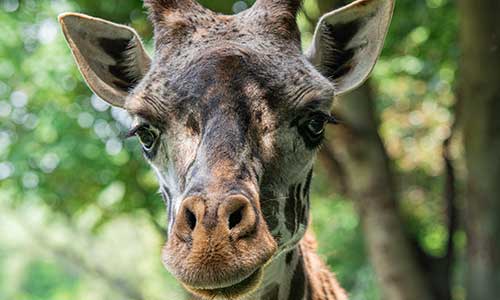Masai Giraffe
Giraffa camelopardalis tippelskirchi
| ⚠️ Animal Alert Giraffes can be seen in their outdoor habitat if it's at least 50 degrees and nice weather. If raining, the temperature cut-off is 60 degrees, and they'll be inside their heated barn. |
About the Masai Giraffe
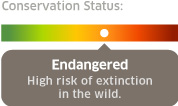
Geographic Range:
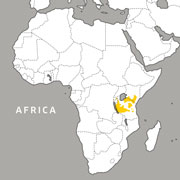
Class: Mammalia
Order: Cetartiodactyla
Family: Giraffidae
Genus: Giraffa
Species: camelopardalis
Subspecies: tippelskirchi
With its long legs and neck, the Masai giraffe is the world’s tallest land mammal. The giraffe has a huge heart—think of a 25 pound basketball—which generates the high blood pressure necessary to maintain blood flow up to its brain. Males often engage in “necking” —swinging their necks to strike each other with the side of their heads to determine hierarchy or show affection. This roughhousing doesn’t cause physical harm, but when confronted by a predator, giraffe will kick with deadly force in order to escape.
Committed to Conservation
Giraffes, an iconic species of Africa, have been going through a silent crisis. In just the past few years, their numbers in the wild have dropped dramatically with little notice. Giraffe numbers have decreased by approximately 40 percent, and there are less than 100,000 giraffes left throughout Africa. Threats include habitat loss, habitat degradation, habitat fragmentation, population growth and poaching. AZA-accredited zoos and their partners are working collectively to help save giraffes through education, scientific research, field work, public awareness and action.
AZA SAFE: Saving Animals from Extinction
We're proud to support the Association of Zoos and Aquariums' SAFE initiative. This program brings together the expertise and resources of AZA-accredited zoos, aquariums, and conservation organizations to protect endangered species and their habitats.
Zoo New England supports the AZA SAFE Giraffe program through our partnership with the Somali Giraffe Project, working to conserve and restore reticulated giraffe populations in Eastern Kenya.
We participate in the Masai giraffe Species Survival Plan. By sharing research and knowledge, participating institutions work together to establish guidelines that best ensure the health of captive populations, and with success, the survival of endangered species.
Giraffe Facts
Appearance:
Giraffe are extremely tall, with long legs and flexible necks for reaching treetop leaves. Like humans, giraffe have seven vertebrae in their necks. However, each giraffe vertebra can be over 10 inches long!
Their tails are long with a tassel at the end used to swat insects. On top of their head are two horn-like structures called ossicones.
The Masai giraffe tends to have a darker coat than other giraffe subspecies, but like them its coat is yellowish with jagged-edged, brown patches. These spots can act as camouflage, especially for calves. Dominant males' spots are often darker than those of the rest of the herd. They have long tassled tails, large even-toed hooved feet, two horn-like structures (ossicones), prominent eyes and ears, and blue-black tongues. Prehensile (grasping), tough tongues help them eat thorny leaves. Thick, gooey saliva coats any thorns swallowed.
Like cows, giraffes are ruminant animals, meaning they have one stomach with four different chambers to help them digest their food.They have large hearts (about the size of a basketball, weighing up to 25 pounds) to generate the high blood pressure necessary to maintain blood flow to the brain. Their upper neck has a special regulation system that prevents excess blood flow to the brain when they lower their head to drink.
Size:
Weight: Males 3,000 pounds; females 1,500 pounds
Height: Males 18 feet; females 14 feet
Diet:
Masai giraffe dine mainly on leaves, bark, twigs, flowers, and fruits. Giraffe especially like leaves from the acacia tree. They use their long, flexible neck to reach the treetops and their long, slick, prehensile tongue to strip the leaves. Giraffe feed and drink primarily in the morning and evening. They are ruminants and wait until the hottest part of the day to chew their cud. Because their legs are longer than their necks, giraffe have to splay their front legs to lean forward in order to drink or graze. Because this puts them in a vulnerable position, trips to the water hole occur in groups. The giraffe take turns watching for predators.
Reproduction:
Giraffe don't have a distinct breeding season. Female giraffe (called cows) mate with the locally dominant male. Females become sexually mature at about 4 years of age.
Gestation:
After a gestation period of 14 to 15 months, the mother gives birth to a single calf while standing up, relying mostly on gravity to facilitate delivery. A newborn calf is about 6 feet tall, weighs 100 to 150 pounds, and is on its feet within an hour of birth. The calf is weaned at 13 months and typically stays with its mother for a year and a half. Sexual maturity is reached at about 4 years of age.
Behavior:
Masai giraffe tend to separate by sex. Female giraffe live in social groups of up to 20, which can include a few young males. Males live in bachelor herds, or as they get older, solitarily. Males often engage in “necking” behavior when they swing their necks around and strike each other with the side of their head. Necking contests determine hierarchy and can also be used to show affection. Surprisingly, necking rarely results in physical harm.
Giraffe are quiet, but they can make a variety of sounds including grunts, hisses, coughs (by courting males), bellows (by females calling their young) and whistles. They have very short sleep requirements, averaging only 1.9 hours per day. Giraffe rest on their feet.
To defend themselves or to escape, giraffe can kick with deadly force. They can run up to 30 miles per hour by "pacing," which involves the front and back legs on the same side moving forward together and allows the legs on the adjacent side to move forward correspondingly.
Habitat/Range:
Masai giraffe live in savannahs, grasslands and open woodlands--preferably near abundant sources of acacia trees. They range throughout Tanzania and southern Kenya.
Median Life Expectancy:
Males: 13.5
Females: 19.5
Conservation:
Giraffe, an iconic species of Africa, have been going through a silent crisis. In just the past few years, their numbers in the wild have dropped dramatically with little notice. Giraffe numbers have decreased by approximately 40 percent, and there are less than 100,000 giraffe left throughout Africa. Threats include habitat loss, habitat degradation, habitat fragmentation, population growth and poaching. Despite these alarming figures, giraffe have received a surprisingly small amount of research, particularly when compared to other large animals including elephants and rhinos.
A 2016 report published in Current Biology uncovered some unexpected findings on the status of giraffe. Up to this point, only one species of giraffe, comprised of several subspecies, had been known to exist. Taking into account skin biopsies on 190 giraffe throughout Africa, this study found that there are, in fact, four very distinct species. These four species include northern giraffe, southern giraffe, reticulated giraffe, and Masai giraffe. It's been reported that the differences among giraffe species are as great as those between polar bears and brown bears.
With these new findings, the hope is that giraffe conservation will gain new attention on the global map. AZA- accredited zoos and their partners are working collectively to help save giraffe through education, scientific research, field work, public awareness and action.
Fun facts:
- The giraffe is the tallest land mammal.
- Giraffe are related to the okapi.
- The giraffe was once called the “camel-leopard” because of its spotted pattern and small hump on its back, hence its species name.
You Can Find This Animal in the Giraffe Savannah
Zoodopt a Giraffe
Zoodopts support the care and feeding of our animals, and with each purchase, we'll bring a little of the Zoo to you! Zoodopt today!
In the News
You might also like
At Franklin Park Zoo:
At Stone Zoo:

